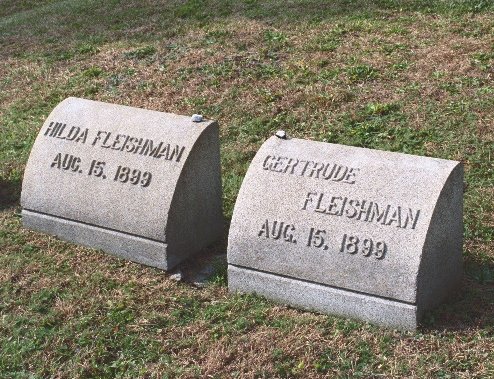November 4, 2006
Saturday
 Regular readers of this space know that I am a taphophile, a lover of tombstones. I’ve been fascinated by cemeteries since I was in first grade and wandered down an alley toward what I thought was a circus tent. Instead of finding elephants and clowns, though, I found people gathered around something I couldn’t quite see, apparently praying. What I could see was row on row of stones in various shapes and designs, some with carved angels, bearing names and dates and beautiful phrases like “Asleep” or “Our Darling” or “Beloved.”
Regular readers of this space know that I am a taphophile, a lover of tombstones. I’ve been fascinated by cemeteries since I was in first grade and wandered down an alley toward what I thought was a circus tent. Instead of finding elephants and clowns, though, I found people gathered around something I couldn’t quite see, apparently praying. What I could see was row on row of stones in various shapes and designs, some with carved angels, bearing names and dates and beautiful phrases like “Asleep” or “Our Darling” or “Beloved.”
“Mommy, you know so many dead people!” Lynn said once as she followed me through Charles Evans cemetery in Reading in search of the Bissinger plot. Once, on a trip to the resting place of Edgar Allen Poe on the anniversary of his death, she told a journalist, “We came to visit one of Mommy’s friends. He’s under a rock!”
A few weeks ago a church member invited me to give a talk to her adult fellowship group about cemeteries at their meeting tomorrow, All Saints’ Sunday on this year’s calendar. She wanted something “funny,” she said. I told her that while I certainly find cemetery study entertaining, I regard the places as holy ground and am not the right person to make a stand-up comedy routine out of what I find there. She agreed to let me plan whatever I wanted.
So for the last two weeks I’ve been preparing a program that starts out as a history of my involvement with cemeteries, gives a short overview of the development of cemetery art and architecture during the nineteenth century (my specialty), and includes pictures of cemeteries and gravesites I have visited. (It’s livelier than it sounds, really.)
 I’ve taken as my theme “One Kind Favor,” from Blind Lemon Jefferson’s 1927 blues song. His gravestone (in a cemetery in Texas which I have not [yet] visited) is seen at left. I wrote about the idea of visiting a forgotten or neglected cemetery in August 2000, when I responded to a prompt to invent a holiday for August. For the last five Augusts I’ve been in Vermont almost the whole month and can’t visit the gravesites pictured in that piece, but I continue to make new friends among the country cemeteries I find near Bread Loaf mountain.
I’ve taken as my theme “One Kind Favor,” from Blind Lemon Jefferson’s 1927 blues song. His gravestone (in a cemetery in Texas which I have not [yet] visited) is seen at left. I wrote about the idea of visiting a forgotten or neglected cemetery in August 2000, when I responded to a prompt to invent a holiday for August. For the last five Augusts I’ve been in Vermont almost the whole month and can’t visit the gravesites pictured in that piece, but I continue to make new friends among the country cemeteries I find near Bread Loaf mountain.
While I was putting together my program I decided to visit a Jewish cemetery to photograph examples of the custom of putting stones on the top of a marker to indicate that one has visited. In 1999 I’d written about another observance I make in August, the anniversary of the train accident a hundred years before that killed two young Jewish women from Harrisburg and their carriage driver (and the horse as well) as they were making their way to the railway station in Wernersville, Pennsylvania. In that piece I said that I had walked the whole of the cemetery I thought the two young women were buried in without success.
The universe has a way of putting me in the right place at the right time. Or, as Zen wisdom has it, when the pupil is ready, the teacher will appear. I walked through the cemetery where only a few weeks ago I’d been a stranger in a strange land but nevertheless among friends whose sad duty it was to fill in the grave of a neighbor who had died suddenly. I left a little pebble there above the spot where his name will eventually go, and one above the panel already filled in for his son.
I saw to the left of Joel’s gravesite a section set off by an iron fence that didn’t seem to have any little stones lying across the tops of the monuments. I walked over there, and quickly realized that this was a section containing graves from the late 1800s and the early 1900s. I kept walking, and reading, and suddenly, there they were, Miss Hilda and Miss Gertrude.

I scooped out two little rocks from a nearby bucket full of them (provided for this purpose), bowed my head, and thanked them for their inadvertent contribution to my historical novel.
And then I left, my presentation complete.
To be included on the notify list, e-mail me:
margaretdeangelis [at] gmail [dot] com (replace the brackets with @ and a period)